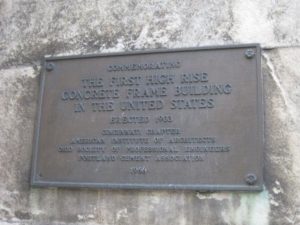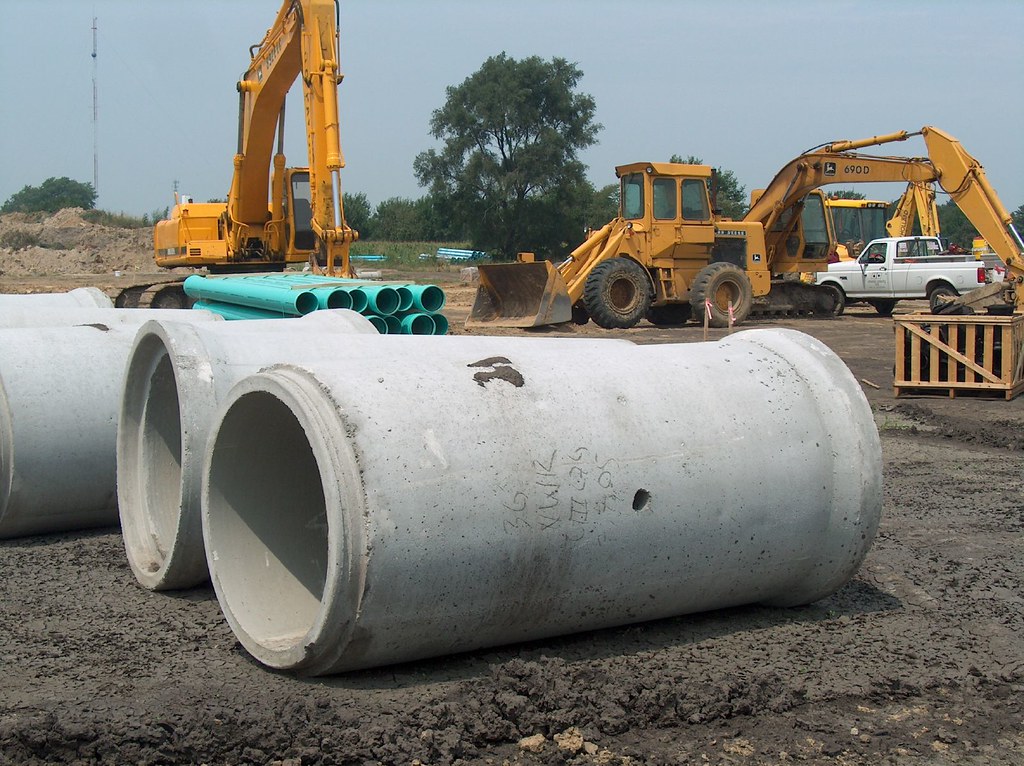The Ingalls Building was built in 1903 in Cincinnati, Ohio. It is the world’s first reinforced concrete skyscraper. The 16-story building was designed by the Cincinnati architectural firm Elzner & Anderson and was named after the primary financial investor, Melville E. Ingalls.

Image source: https://search.creativecommons.org/photos/7c39aa86-5d9d-4038-a465-e0606513807f by w_lemay
The Ingalls is a massive structure, consisting of solid columns and foundations bolstered with Ransome’s patented square torsion steel bars. From 1902 to 1903 the Ingalls Building, in step with the American Portland Cement Manufacturers Association, accounted for regarding half simple fraction of all cement employed in the US.
Still in use these days, the building was selected a National Historic Civil Engineering Landmark in 1974 by the American Society of Civil Engineers. In 1975, it was supplemental to the National Register of Historic Places.
Overcoming Skepticism
Before the first concrete bucket was poured, a big battle took place just to get the necessary permits to build the structure. Melville E. Ingalls, president of the Big Four Railroad and the building’s namesake, and Anderson battled with the Cincinnati Construction Department for two years before convincing them of the building’s stability and durability. Skepticism was high because the maximum existing height for a concrete building was only six stories.
Legend has it that people were so sure the building would collapse that a local reporter once stood outside the building all night, waiting for it to collapse.
Why Reinforced Concrete?
Anderson chose concrete because it was fireproof and because it would have been cheaper to build a structure of this size. Henry N. Hooper of The Ferro-Concrete Construction Company in Cincinnati was the concrete contractor chosen to realize Anderson’s vision. Hooper employed methods perfected and patented by Ernest L. Ransome, the man who designed and built the world’s first reinforced concrete bridge, Alvord Lake Bridge, in San Francisco’s Golden Gate Park in 1889.

Image source: https://en.wikipedia.org/wiki/Ingalls_Building#/media/File:Ingallsplaque.jpg
The amount of concrete produced during construction—100 cubic yards (76 m³) in each ten-hour shift—was limited by how quickly builders could place it. An extra moist mixture was used to ensure full contact with the reinforcements and uniform density in the columns. The Ingalls was completed in just eight months and has been in constant use ever since. It remained the tallest reinforced concrete building in the world until 1923, when the 281-foot tall Medical Arts Building in Dallas, Texas was built.
The Invention of Reinforced Concrete
The development of Reinforced concrete began with French gardener Joseph Monier’s 1867 patent for large concrete flowerpots reinforced with a wire cage. French builder François Hennebique applied Monier’s ideas to floors, using iron rods to reinforce concrete beams and floors; Hennebique was the first to realize that the rods had to be folded up to take negative moment near the supports. In 1892 he closed his construction business and became a consulting engineer, building many structures with concrete frames consisting of columns, beams, and slabs.

Image source: https://search.creativecommons.org/photos/319b1f32-3185-48e7-8d35-43e1c3df0f64 by Pam_Broviak
In the United States, Ernest Ransome patented the use of twisted steel bars for concrete reinforcement following the steel frame paradigm, in 1884. His pioneering efforts helped establish the viability of concrete for large, buildings on multiple levels.
Info sources:
https://www.britannica.com/technology/building-construction/Early-steel-frame-high-rises#ref105159
https://en.wikipedia.org/wiki/Ingalls_Building
http://www.asce.org/project/ingalls-building/
http://www.concretecontractor.com/concrete-construction-projects/ingalls-building/
